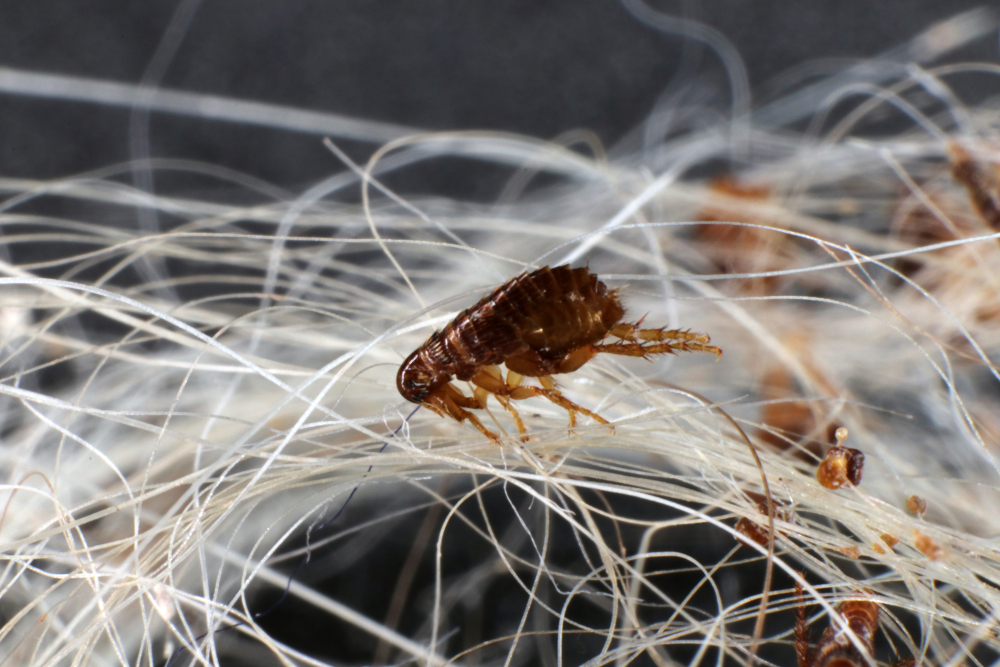Fleas and ticks are tiny creatures that pose a major threat to your pet’s health. These pests cause discomfort and can transmit deadly diseases to your furry pal or other household members. Fortunately, pet owners can take steps to effectively safeguard their pets from these troublesome parasites. The Commonwealth Animal Care team provides information about flea and tick dangers and essential strategies to keep pets safe.
Flea infestations and your pet
Fleas are small, winged insects that live on your pet’s skin and fur, dropping eggs into the environment to perpetuate infestation. Once established, getting rid of fleas is a challenge and requires extensive daily cleaning alongside long-term treatment for all four-legged household members. Flea infestations may cause only minor itching, or they may cause more serious discomfort or illness.
Examples of common flea-related diseases include:
- Tapeworms — Fleas are the intermediate hosts for a specific tapeworm species, which means pets who ingest these infected fleas can develop tapeworm infections. Although generally not harmful to pet health, the tapeworms are unsettling for most pet owners as the segments appear in feces or around the home.
- Flea allergy dermatitis— Allergies to flea saliva lead to flea allergy dermatitis, which causes intense itching, hair loss, and inflamed skin starting above the tail base and extending to other areas.
- Bartonellosis — Bartonella bacteria cause the disease known as cat scratch fever, which can be transmitted to humans through flea bites or cat scratches. Infected cats and humans may or may not show signs of illness, including fever or swollen lymph nodes.
Tick bites and your pet
Ticks are free-living but must feed on animals to molt or mate. Tick bites can sometimes cause allergic reactions or become infected, but the real danger is the possibility of infectious disease spread. Ticks are known carriers of several bacterial illnesses that affect various species, including dogs and humans.
Examples of common tick-borne diseases include:
- Lyme disease — Lyme disease is associated with the deer tick, which has a wide range in North America. Signs in dogs include lameness, joint swelling, fever, and lethargy. In severe cases, Lyme disease can advance to a chronic stage that leads to kidney failure.
- Ehrlichiosis — Ehrlichiosis signs may include fever, lethargy, swollen lymph nodes, or bleeding disorders.
- Anaplasmosis — Anaplasmosis signs may include fever, lethargy, joint pain, vomiting, or diarrhea.
Because tick-borne diseases can go undetected for long periods, our team recommends periodic screening for at-risk dogs. This simple blood test can be performed along with the annual heartworm test or a wellness blood panel.
Flea and tick prevention for pets

Preventing flea and tick infestations is key to protecting your pet’s health. Consider incorporating the following strategies:
- Using preventive products — Consult with our veterinary team to select an appropriate flea and tick prevention product for your pet, which may include spot-on treatments, oral medications, or long-acting collars. Follow instructions for these products carefully—never use a dog product on a cat or vice versa.
- Performing routine checks — Inspect your pet regularly for fleas and ticks, especially after outdoor activities. Fleas move quickly and you may not see them, but you’ll find brown specks of digested blood on the skin or coat.
- Avoiding parasite hot spots — Stay away from heavily wooded areas and tall grass where parasites hide, or areas frequented by wildlife.
- Clearing yard debris — Leaf litter, overgrown grass, and other yard debris can create a welcoming environment for fleas, ticks, or small animals hosting these pests. Keep your yard clear and your lawn cut short.
Fleas and ticks are small, but they can cause big problems for dogs and cats. By understanding parasite dangers and taking preventive measures, you can protect your pet from the discomfort and health risks associated with parasite infestations. Contact the Commonwealth Animal Care team for more information about parasite dangers in our area or to schedule a visit for parasite screening and development of a comprehensive management plan.







Leave A Comment